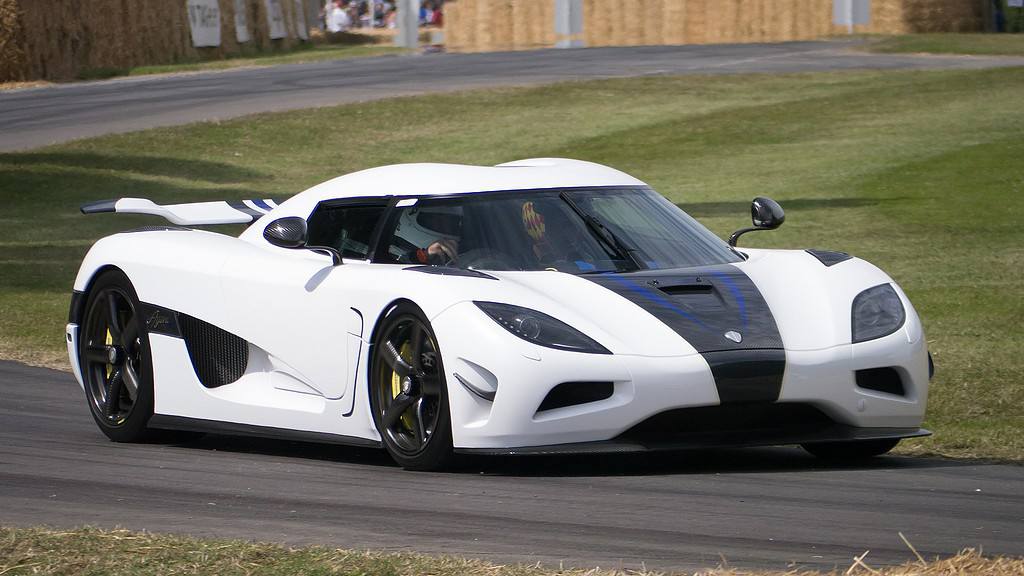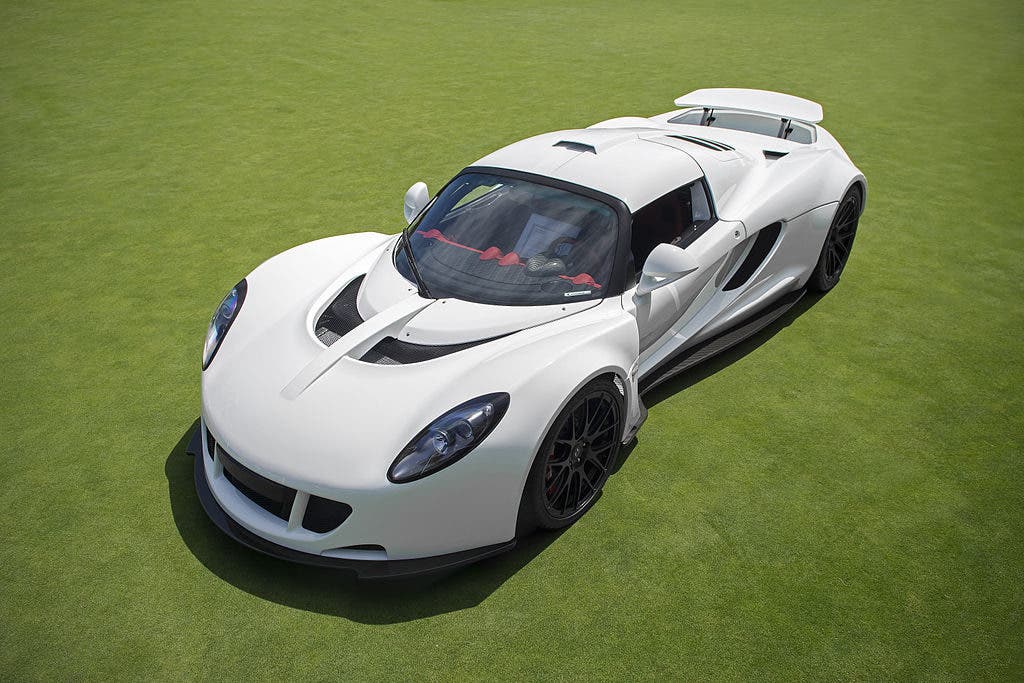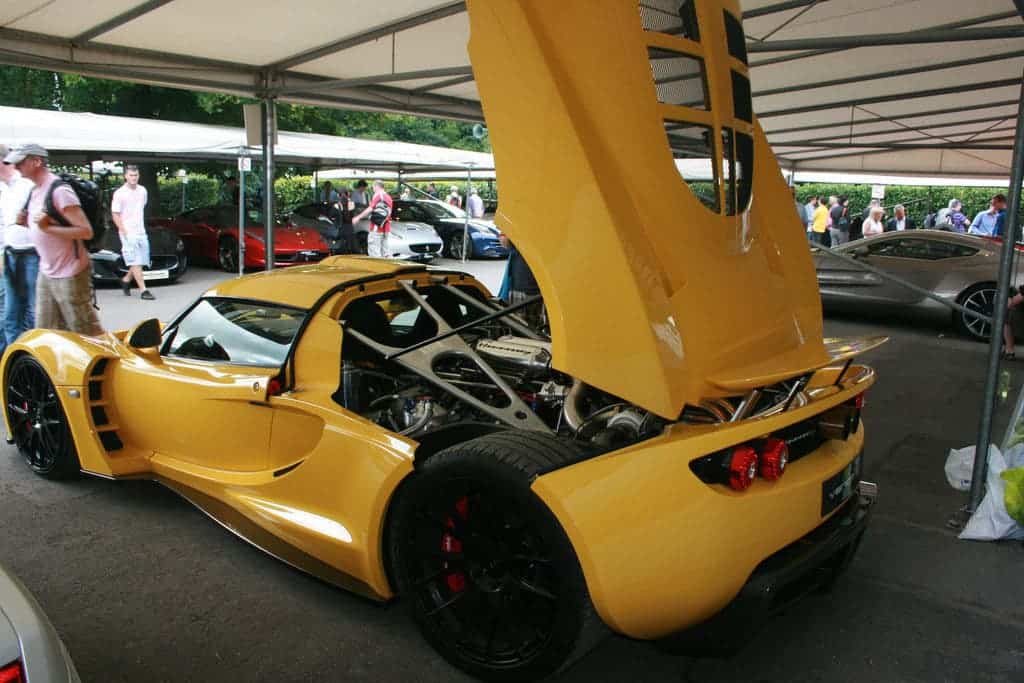The original version of this article was out of date. Currently, the fastest production car in the world is the Koenigsegg Agera RS, which reached a two-way speed of 475 km/h (295 mph) at Space Florida’s Launch and Landing Facility in 2017. This was verified by GPS and a specialized technician. We have left the original version of the article in place after the following image.

Many different qualities make a car desirable, but speed is definitely the flashiest. Sure, in our day-to-day lives, the maximum speed of a car plays literally no role, but we’re somehow drawn to fast cars. We love speed, and we love records. There are two contenders to this title: the Bugatti Veyron Super Sport and the Hennessy Venom GT. The record is not without controversy, as the two producers accused each other. We’ll look at their claims each and then the controversy that surrounds each of them.
The fastest car — officially: Bugatti Veyron Super Sport
At 268 mph (431 km/h), the Bugatti Veyron Super Sport is listed in the Guinness Book of World Records as the world’s fastest production car. The 1,200 horsepower legend dethroned an impressive number of other cars (including its predecessor, the Bugatti Veyron) to snatch the title.

The move came as a shock to no one who followed the company In May 1998, Volkswagen AG acquired the rights to Bugatti, and they had one objective in mind: build the fastest car. They designed an 8.0-liter, quad-turbocharged, W16-cylinder engine )which is the equivalent of two narrow-angle V8 engines bolted together). The car’s everyday top speed checks in at 343 km/h (213 mph), but for the purpose of the record, the speed limiter was removed so the car could reach its full potential.
The Bugatti Super Sport was also named Car of the Decade (2000–2009) by the BBC television program Top Gear — which is arguably just as important. But not everyone was a fan of this car.
Gordon Murray, designer of the McLaren F1 (which for many years was the fastest production car ever built, so he comes with a clear bias) criticized the Veyron Super Sport for being built with a single purpose, that of becoming the fastest car — all other elements of design being completely ignored. In a way, he’s right — numerous tweaks in terms of aerodynamics were made, just to ensure a few more mph.

In case you’re wondering, this beauty will set you back as much as $1.9 million. Well, if you want to be the fastest, I guess it doesn’t come cheap. But is this car really the fastest?
The fastest car — unofficially
This is where the controversies start.
The Hennessy Venom GT was clocked at 270 mph (434.5 km/h), just a tad faster than the Bugatti. So then why isn’t it considered the fastest? Well, there’s no central authority to measure such claims and no clearly accepted standardized method. In the case of the Hennessy Venom, the world-record speed at the Kennedy Space Centre. However, the car only ran in one direction — in order to be accepted officially, it needed to run both ways, to eliminate the effect of the wind.

The GT is also more powerful than the Bugatti Veyron, though it’s not the most powerful in the world, lagging a bit behind the Bugatti Chiron and the Koenigsegg Regera. The Venom GT has a curb weight of 2,743 lb (1,244 kg) and a power-to-weight ratio of 1 kg (2.20 lb) per horsepower. At 1,451-hp, that’s as impressive as it gets. Instead of opting for a single W16-cylinder engine like the Bugatti, the Venom GT features a 7.0-liter twin-turbo V8.
The Venom GT costs $1.2 million US Dollars plus shipping. It’s almost two times cheaper than the Bugatti. Since the Venom GT is officially out of production, it’s as good a time as you’ll get to buy one. Unfortunately, this also means we won’t be getting a two-way official record, and we’ll never know which one of the two cars is actually faster.

Even more controversy
It’s not just the infamous one-way-only speed run that the Hennessy car did that caused controversy. The SSC Tuatara was not counted as the fastest car for the same reason: its record-breaking speed of 475 km/h (295 mph) was only reached in one direction, not both
Bugatti was also under fire because they removed their speed limiter in order to reach that speed. Since the Guinness World Record doesn’t allow any car modification, the record was temporarily withdrawn from Bugatti and then returned after officials reconsidered. They said removing a speed limiter doesn’t count as a modifier, though Hennessy contested it.
At the end of the day, both companies are going to say they have the fastest car. As I said, there’s no accepted authority to say what the “fastest car” is, and it doesn’t really matter. They’re two splendid cars that can both go way beyond any speed we can ever dream of reaching.
In case you’re wondering, the absolute land record speed (as opposed to the speed record for a production car) is way, way higher than that. In 1937, George Eyston rode his famous Thunderbold, a hand-made car at 311.42 mph (501.16 km/h), way over the Bugatti and Hennessy. Nowadays, speeds of over 400 mph (643 km/h) are commonly reached. The official land-speed record (measured over one mile) is 1,227 km/h (763.035 mph), going over the speed of sound. It was set by Andy Green (UK) on 15 October 1997 in the Black Rock Desert, Nevada, USA.


